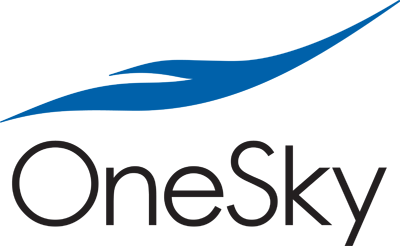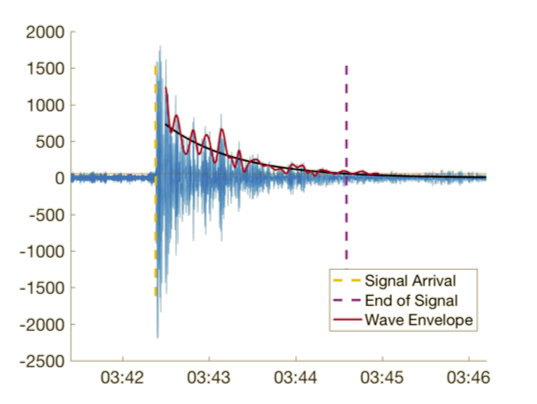41-50 of 263 results
-
ERAU Industrial Math Project: Predictive Analytics in Child Welfare
PI Mihhail Berezovski
CO-I Maegan Revak
CO-I Daniel Oldham
CO-I Betiay Babacan
CO-I Nathan Foster

The purpose of this project is to study the data provided by Partnership for Strong Families (PSF) and identify any factors that could lead to a child being removed from his/her home multiple times.
The Partnership for Strong Families (PSF) is a child welfare organization headquartered in Gainesville, Florida helping to serve 13 counties in northern Florida. PSF is a service provider for The Florida Department of Children and Families (DCF). DCF estimates that, within PSF’s area, approximately 45 children are removed every month from their parents’ (or guardians’) care. This is equivalent to approximately 5-6 children per 100 alleged victims of child abuse.
There is a clear need to identify, as early as possible, children who are at risk. As more data is collected, tracking methodologies need to be developed to predict the likelihood of a child entering (or reentering) the state system. The purpose of this project is to examine removals within PSF’s area over the last 7 years and to potentially identify factors that lead to a child’s re-entry into the state shelter system.Children are removed from their parents’/guardians’ care due to verified findings of allegations called into the Hotline. Parents are given a Case Plan to complete to provide them with the tools for the children to return safely to their family home. Reunification occurs once PSF, DCF and the Court agree that the children should be safe in the home when returned.
In generic terms, we will attempt to look at children who were separated from their parents then reunified at some later point. The question is whether there are any quantifiable indicators within the case that, when assigned an unknown weight, will determine whether we can predict a child will be removed again. If there’s a relatively high likelihood of removal, then perhaps services can be provided to the family to ensure the child will be safe and not need to be removed.
This project is sponsored by ERAU Office of Undergraduate Research through IGNITE grant.
Categories: Undergraduate
-
ERAU Industrial Math Project: OneSky Optimization
PI Mihhail Berezovski
CO-I Jose Gachancipa Parga
CO-I Timothy Mitchell
CO-I Ian Young
CO-I Ian Mungovan

OneSky Flight supports the technology needs of five established private jet brands: Flexjet, Sentient Jet, SkyJet, PrivateFly, and Sirio. One key function required by these businesses is fleet optimization. The ultimate goal for the OneSky Optimization project is to create a new optimizer that works across all of the OneSky brands.
This is the exercise of matching available aircraft with trips that need to be flown for customers. There are many possible conditions, stipulations, and goals in fleet optimization depending on the business. For instance, Flexjet is a fractional ownership brand that has its own fleet of aircraft that is used to meet owner needs. However, Sentient is a charter broker brand that does not own any aircraft, and instead, works with various operators’ aircraft to meet customer needs. In working with Embry‑Riddle Aeronautical University, we hope to develop our own optimization algorithms and solvers to eliminate the need for the mathematical engine, CPLEX, which is currently being used.
One strategy that has been used for this type of problem is to create a set of ten to twenty optimization algorithms, develop heuristics that take care of constraints, utilize machine learning to train the algorithms based on historical data, and create criteria for identifying the best solution from the set of results.Categories: Undergraduate
-
ERAU Industrial Math Project: Characterizing Seismic Events through Advanced Data Analytics
PI Mihhail Berezovski
CO-I Lawrence Acchione
CO-I Nathaniel Arzola Lilly
CO-I Dhairya Chokshi
CO-I Jessica Haselwood
CO-I Paige Rasmussen
CO-I Nikolaus Rentzke

The Signal Processing and Applied Mathematics research group at the Nevada National Security Site, is seeking to collaborate with students at Embry‑Riddle Aeronautical University to develop advanced data analytics methods for characterizing seismic events in the southwest United States as near-field earthquakes, far-field earthquakes, or non-natural seismic events, using publicly available seismic data.
One way of monitoring whether other countries are engaging in explosives-driven testing of weapons is to measure seismicity from the events, but this is only interesting if we can correctly characterize a seismic event as an:
- earthquake,
- industrial explosives event (mining, construction, etc.),
- or an explosives test.
The first step is to simply be able to distinguish between natural and non-natural seismic events. Since the Nevada National Security Site engages in explosives-driven tests - and is in an area of active earthquake activity - it is a natural test bed for developing data analytics approaches to classifying signals as natural or non-natural. Being a "test bed" means that, in addition to the measured signals, we have some ground truth information, meaning we know when earthquakes and explosives tests actually happen.
Larger-scale experiments, like the North Korean nuclear tests, can be seen at much larger distances, so even in Nevada we can measure seismic signals from nuclear tests. Figure shows a seismic measurement in Nevada from North Korea's September 2017 nuclear test.
Primary Goal: Develop analytics methods for differentiating near- field, small earthquakes in Nevada and southern California, from far- field, large earthquakes around the world, from non-natural seismic events.
One of the primary challenges in analyzing seismic data is that the data is collected 24 hours per day, 7 days a week, but actual seismic anomalies - either natural or not - occur relatively rarely.
Thus a first step in the analytics is to develop a technique for combing through the data to find anything that looks like an anomaly. The second task will be to classify the anomalies.Categories: Undergraduate
-
NREUP: Predictive Analytics for Dynamic Pricing in Private Aviation
PI Mihhail Berezovski
CO-I Mariah Marin
CO-I Camryn Wills
CO-I Mafalda Soares

OneSky Flight supports the technology needs of four established private jet brands; Flexjet, Sentient Jet, PrivateFly, and Sirio. One key function required by these businesses is trip pricing. This is the exercise of determining the appropriate price for a trip, considering many factors. Today, this process is manual. The ultimate goal of this project is to create a dynamic pricing tool that generates an appropriate price for trips in the US and EU. There is a large part of this project that needs to be addressed: Event Calendar. The Event Calendar includes a factor for each day of the year. These factors are based on the events/holidays that happen throughout the year and their impact on the demand for days on and surrounding the events/holidays. Support for this project is provided by the National Research Experience for Undergraduates Program (NREUP) of the Mathematical Association of America funded by the NSF Grant #1950644.
OneSky Flight supports the technology needs of four established private jet brands; Flexjet, Sentient Jet, PrivateFly, and Sirio. One key function required by these businesses is trip pricing. This is the exercise of determining the appropriate price for a trip, considering many factors. Today, this process is manual. The ultimate goal of this project is to create a dynamic pricing tool that generates an appropriate price for trips in the US and EU. There is a large part of this project that needs to be addressed: Event Calendar. The Event Calendar includes a factor for each day of the year. These factors are based on the events/holidays that happen throughout the year and their impact on the demand for days on and surrounding the events/holidays.
In order to build the list of possible events that affect the intensity of flights extended data analysis was performed. Along with processing 3 years of raw flight data (~8,000,000 single flights), students did independent research on theory behind dynamic pricing. Team determined the patterns in raw data and identify anomalies as possible event, mapping them and sorting them in holidays, sport events, extreme weather events, etc. based on open sources, also recognized the local and global patterns before identification. The corresponding quantitatively model for model of dynamic pricing algorithm was developed. It is the hierarchical model with primary and secondary factors: considering normal weekly traffic, seasonal increments, and day of the week of a selected event. With given three years of flight history, model was build using any two years and validated using third on: the prediction of demand for third year was modeled and compared with third year actual data.
Support for this project is provided by the National Research Experience for Undergraduates Program (NREUP) of the Mathematical Association of America funded by the NSF Grant #1950644.
Categories: Undergraduate
-
Novel Space Science Test via Adaptive Control and Integral Concurrent Learning Leveraging On-Orbit CubeSat Structural Identification
PI Riccardo Bevilacqua
The objective of this work is to create the basic science underpinning the structural testing and evaluation framework and control for deployable large spacecraft.
The objective of this work is to create the basic science underpinning the structural testing and evaluation framework and control for deployable large spacecraft. Large space structures and those with high dimensional ratio between deployed and stowed configurations are extremely difficult to test on the ground. The AFRL’s Space Vehicle Directorate recently opened the new Deployable Structures Laboratory, or DeSeL, as evidence of a renewed interest towards these systems. DeSeL represents the state-of-the-art technology for on-the-ground experimentation of deployable systems. In particular, an active Gravity Off-Load Follower (GOLF) cart system is being currently developed, intended to have three degrees of freedom (attitude motion) which could foreseeably provide the capability for large low-frequency motions. The real capabilities of the GOLF system are yet to be determined, and this research effort will develop in parallel, assist, support and inform the development of this new facility at AFRL.
New testing and evaluation science to identify these systems’ behavior and control them, that are robust to large uncertainties in the structural dynamics are then needed, and the first time they deploy on orbit is the ultimate test.
We propose to obtain the objective by combining novel control and learning theory with ad-hoc experimental activities. The culmination of this effort will be a flight demonstration, where a CubeSat previously designed by the Advanced Autonomous Multiple Spacecraft (ADAMUS) laboratory will be modified in its design and perform autonomous on-orbit structural identification, control, and testing.
The flight demonstration will be based on measuring the natural frequencies, damping ratios and vibration mode shapes via excitation of the spacecraft, using reaction wheels on the main hub and potentially distributed small thrusters on the flexible bodies, emulating the configuration of the AFRL’s Space Solar Power Incremental Demonstrations and Research Project (SSPIDR).
Categories: Faculty-Staff
-
GNC Efforts in Support of the University of Floridas Research for the NASA Instrument Incubator
PI Riccardo Bevilacqua
The following tasks will be performed by one Ph.D. student and Dr. Bevilacqua (PI at ERAU), in support of the University of Florida’s proposal for the NASA’s Instrument Incubator Program (IIP):
Year 1:
- Drag-compensation and test mass control design. Adaptive control combined with integral concurrent learning will be investigated to estimate, in real-time, the effects of drag on the spacecraft, to enable precise control of the test mass inside it. The PI has successfully used this technique for drag-based spacecraft formation flight, where online estimation of the ballistic coefficient of an unknown vehicle is critical.
- Support for drag-compensation thruster mapping. Lyapunov-based thruster selection principles, previously developed by the PI, will be used to simplify the thruster mapping problem, and prevent the use of any numerical iterations, to ease online implementation. An additional step will involve exploring the possibility to use adaptive + ICL control to also estimate the thrust errors and their misalignment.
Year 2:
- Spacecraft acceleration estimation based on S-GRS outputs. The test mass position and orientation are measured inside the sensor and the applied forces and torques on the test mass are known. How to use this information to optimally estimate the spacecraft acceleration and angular acceleration due to atmospheric drag remains a challenge. An approach based on a bank of Kalman (or Extended Kalman) Filters will be explored, possibly in iterative form, as previously done for spacecraft relative motion estimation by Dr. Gurfil at Technion and by the PI and one of his former students.
Year 3:
- Support for hardware-in-the-loop testing of the control system at UF. The PI and the PhD student will support experimentation at UF, to implement the above algorithms in hardware systems. The PI has over a decade of experience in on-the-ground testing of spacecraft GNC systems.
Year 1-3:
- Support for numerical simulation of the closed-loop system. High-fidelity orbital and attitude propagators will be used to test the algorithms developed. STK and NASA’s Spice will also be candidates for comparison.
Categories: Faculty-Staff
-
CubeSats Hosting Flexible Appendages for On-Orbit Testing of Advanced Control Algorithms
PI Riccardo Bevilacqua
The objective of this work is to start the assembly of a CubeSat hosting specialized flexible appendages, taking inspiration from a previously designed spacecraft developed by the Advanced Autonomous Multiple Spacecraft (ADAMUS).
The objective of this work is to start the assembly of a CubeSat hosting specialized flexible appendages, taking inspiration from a previously designed spacecraft developed by the Advanced Autonomous Multiple Spacecraft (ADAMUS). This CubeSat will eventually enable testing of ADAMUS’ developed spacecraft control algorithms on-orbit.
Relevance to NASA: The innovation proposed herein lies in the ability to autonomously characterize and control complex space structures. This project will directly support NASA’s TA 4: Robotics and Autonomous Systems
Categories: Faculty-Staff
-
A Machine Learning Based Transfer to Predict Warhead In-Flight Behavior from Static Arena Test Data
PI Riccardo Bevilacqua
The objective of this work is to combine high-fidelity numerical models with unique/ad-hoc experimental activities to strengthen basic science underpinning the test and evaluation framework for warhead fragmentation and fragments fly-out.
Warhead fragmentation predictions are based on either numerical simulations or static arena tests where detonations occur in unrealistic conditions (not flying). The first methodology presents many shortcomings: there is no agreement on the state of the art for simulations, and many tools ignore important aspects such as gravity, aerodynamic forces and moments, and rigid body motion of different shape fragments. Numerical simulations are also lengthy and cannot be used as online/on-the-battlefield tools. The experimental approach is also extremely limited, as it does not reproduce the real-world conditions of a moving warhead.
The objective of this work is to combine high-fidelity numerical models with unique/ad-hoc experimental activities to strengthen basic science underpinning the test and evaluation framework for warhead fragmentation and fragments fly-out. In particular, we will aim at combining the most advanced simulation capabilities with static experimental data, to obtain a transfer function predicting lethality and collateral damage of a given warhead in real-life conditions. Artificial neural networks and/or other machine learning tools (e.g., Random Forests) will be used to capture the underlying physics governing fragments dispersion under dynamic conditions, coming from NAVAIR’s Spidy software, and eventually combine this knowledge with real warhead characteristics, coming from the static test. This proposal is of high impact because of the existing gap in analytical tools to define and validate warhead fragmentation testing.
The broader impact (long term) of this work may be a software tool that the warfighter can use on the field to rapidly assess the effects of the arsenal at his disposal. This tool will be equally beneficial to designers and testers within the Air Force and the DoD in general.
Categories: Faculty-Staff
-
Evaluating Preflight Weather Briefing Strategies
PI Elizabeth Blickensderfer
CO-I Thomas Guinn
CO-I Robert Thomas
The objective of this grant is to examine General Aviation (GA) pilots’ capability to conduct Preflight Weather self-briefings as compared to using Flight Services to obtain weather briefings. Previous research indicates that GA pilots are increasingly conducting weather self-briefings during preflight (Duke et al., 2019). Additional research indicates that GA pilots have moderately low performance when interpreting aviation weather observation and forecast products (Blickensderfer et al., 2019). Research is needed to assess and understand the attitudes, knowledge, and performance of GA pilots conducting self-briefings to identify possible gaps and, in turn, provide recommendations for future system design and pilot training.
Categories: Faculty-Staff
-
STEM Literacy and Service-Learning
PI Sally Blomstrom
This service-learning project investigates STEM literacy and involves students in sections of Speech (COM 219). Students create an audio tour about a specimen from the A. Jewell Schock Natural History Museum. The audio tour includes the specimen’s scientific name, a description of its biology, its habitat, its diet, and the forces of flight related to the specimen as well as its biomechanics.
They will be instructed to develop content which includes descriptive information about the biology of the specimen (science), the biomechanics used (engineering), dimensions of the specimen and its rate of speed (math). They will use technology in the process of creating and sending the audio files, and the museum will use technology to make the files available to visitors of the museum, both online and in person (technology). The goal is to have students engage in research on a STEM topic and then communicate their knowledge to a general audience using technology. We are investigating if, and to what extent, the project increases STEM literacy which is defined as a demonstrated ability to read STEM text, tables, and graphics with understanding, to evaluate the quality of the read information, to identify relevant information and incorporate that information in written or oral communication.
Categories: Faculty-Staff
41-50 of 263 results
